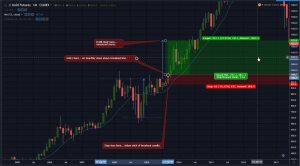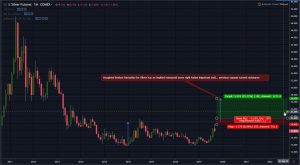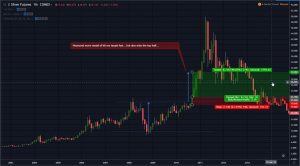Classic chart trading applied to gold and silver
For a while I had abandoned Stage Analysis in favor a more simple trading framework. I didn’t look at macro… or weight of evidence… just the chart! No moving average, only candles. I wanted to trade forex, and my broker had no volume data, so Stan Weinstein’s framework went out the window.
On completion of a pattern with a horizontal break line, I’d enter, setting my 2 conditional orders to get out, for a profit OR loss! I would then move one, not caring in the world what was happening to the chart. Never moving my sell-stops or profit limits.
Do or die. I could get within inches of my target, only to have the price revert back all the way down to my stop-loss. Or I’d reach my target, exit at the profit limit, but would miss out the rest of the move that Stage Analysis would of let me grab!
That was the price I was willing to pay for my lack of emotional robustness.




Is he the same person
https://goldtadise.com/?p=394282
This post is on side bar under TA Tool kit.
Hi Bikoo,
Yes, that is a print grab from Stan’s book ‘secrets for profiting in bull and bear markets’, where he covers his version of Stage Analysis.
Regards,
Patrick
Thanks for reply. Looks like you r working with monthly candlestick chart.
His stage analysis involves weekly 30ema line. His definition of stages are based on where price trades relative to weekly 30ema line.
The examples above are me illustrating my alternative trading framework, when I steered away from Stage Analysis. I went on to classic chart trading on monthly chart to reduce whipsaws.
I presently do both. Monthly chart classic chart trading + stage analysis… and work my way down to weekly charts for precision entries and sometime’s daily charts to get a glimpse of trend turn around. (trends have to start rolling over on smaller time frames… then they cascade on higher time frames if the shift in momentum can pick up steam).
If you are playing against the higher trend, you are asking for trouble!
Side note: Stan later used (and preferred) the simple moving average. The weighted moving average is used in his book simply because at that time, his charting services didn’t have the simple moving average available. https://stageanalysis.net/forum/showthread.php?tid=11&page=82&highlight=simple+moving